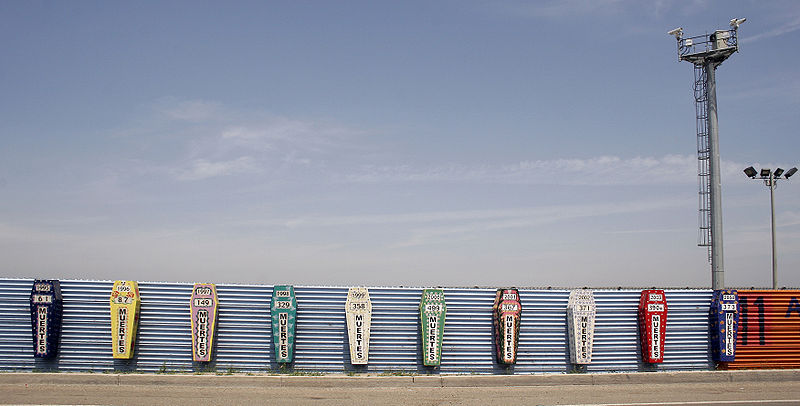The march of hundreds of Central American migrants through Mexico has inflamed tensions between the Trump administration and the Mexican government and focused attention on the United States’ southern border.
The ostensible reasons for the march are familiar: The migrants were fleeing corruption, social and political turmoil, and lack of opportunity in their home countries. Many were from Honduras which suffered a coup in 2009 that continues to divide the country politically including during the last election in which supporters of the challenger to the incumbent president claim their candidate was cheated out of a win.
All of this reminded me of Jean Raspail’s novel The Camp of the Saints. In it, impoverished Indians seized hundreds of ships docked in their harbors and set sail to find a better place to live. (The book was published in 1973 when many believed that millions of Indians and other Asians would likely starve in the coming decades due to poor agricultural yields. The full effects of the so-called Green Revolution still lay ahead.)
In the novel, as the seaborne caravan makes its way westward, first to the Suez Canal, where it is repelled, then around the Cape of Good Hope, Europe braces for what it believes is an inevitable invasion of desperate Indians.
A vitriolic debate ensues inside France about whether the country should try to help the Indians or simply repel them.
Raspail, a celebrated author in France, was denounced as a racist when the book was released. His book continues to be a favorite among American white supremacists. And, former Trump advisor, Steven Bannon, is reported to be a fan of Raspail.
Raspail defended himself saying that he was only trying to show how French culture and more broadly European culture would be destroyed by a large influx of immigrants. A similar argument now rages across Europe as refugees from Syria and other parts of the Middle East continue to arrive.
I have written about the war in and subsequent migration from Syria as partly climate-change induced. The fact that climate change on its current course could dramatically cut the productivity of grain growing areas means that an expanding world population in need of a 50 percent increase in grain production by 2050 would instead face declining supplies. Could some version of Jean Raspail’s dark vision of mass migration be far off if this turns out to be the case?
Just last year America experienced a snap mass migration from Puerto Rico when Hurricane Maria knocked out electricity to almost the entire island and destroyed much other infrastructure. The hurricane’s severity was arguably linked to climate change. Some 200,000 residents have fled to the U.S. mainland in the aftermath to escape the chaos.
These Puerto Ricans, of course, did not have to cross the U.S. border to enter the country. They are already citizens and constitutionally they enjoy freedom of movement throughout the United States as does any citizen in any U.S. jurisdiction.
In 2007 I suggested that the precipitous drop in Mexico’s oil production could lead to a mass migration to the United States as oil-fueled prosperity in the country disappeared. But then $100 oil happened, making up for the loss of production until now. It’s not clear that the collapse in oil prices in 2014 has created more of a flow of Mexicans to the United States than before. Border arrests hit a 45-year low in 2017. But someday, dwindling oil revenues will make Mexico an increasingly poor country unless it revolutionizes its economy to create substantial wealth to replace the lost oil revenues.
Mass migrations are not new. They have happened historically because of epidemics, wars, political oppression, and even changes in climate and resource exhaustion (think: mining ghost towns). What’s new is that they are happening because humans are changing the climate in ways that affect resources, namely food, and habitability, for example, flooding due to sea level rise or increased rains. Climate-change enhanced epidemics including the spread of tropical diseases are forecast as well.
The migrant caravan through Mexico was relatively small, only a few hundred or perhaps a thousand people. It was an organized and largely tranquil affair meant to be symbolic. The migrations to come are unlikely to be so small or so organized. And, we are doing very little to change the trajectory of climate change or resource depletion that will be at the root of many such migrations.
Photo: Monument for those who have died attempting to cross the US-Mexican border. Each coffin represents a year and the number of dead. It is a protest against the effects of Operation Guardian. Taken at the Tijuana-San Diego border (2006). © Tomas Castelazo, www.tomascastelazo.com / Wikimedia Commons / CC BY-SA 3.0. Via Wikimedia.






